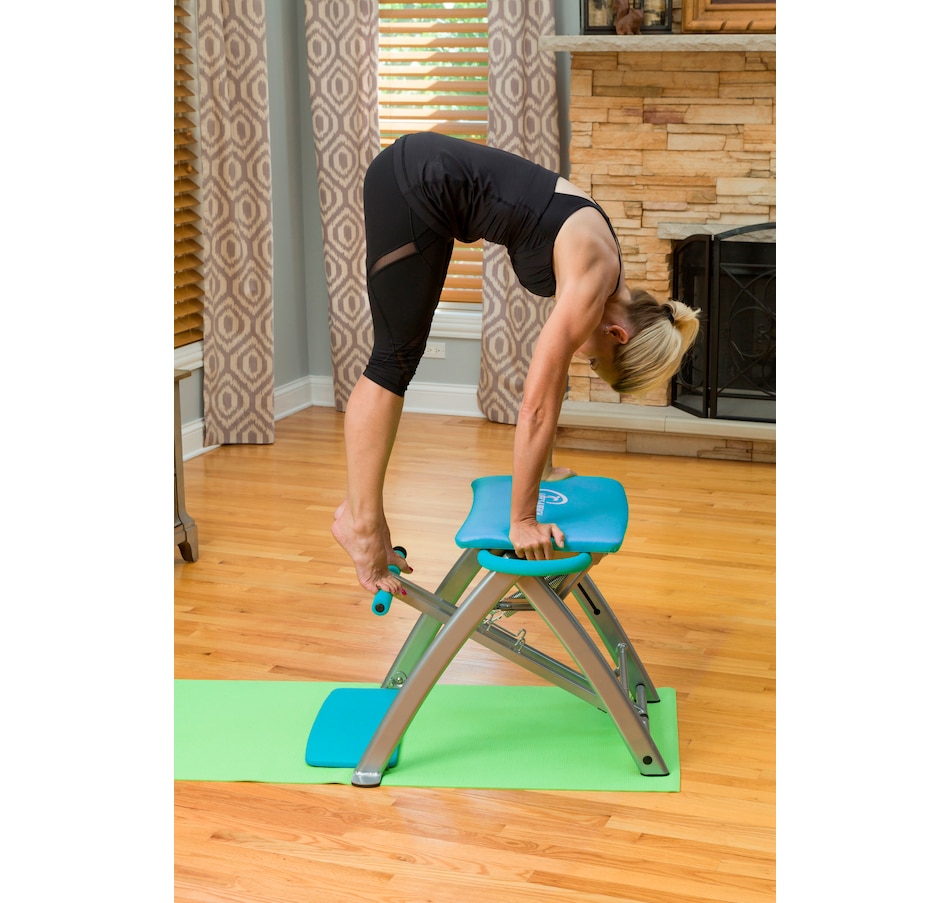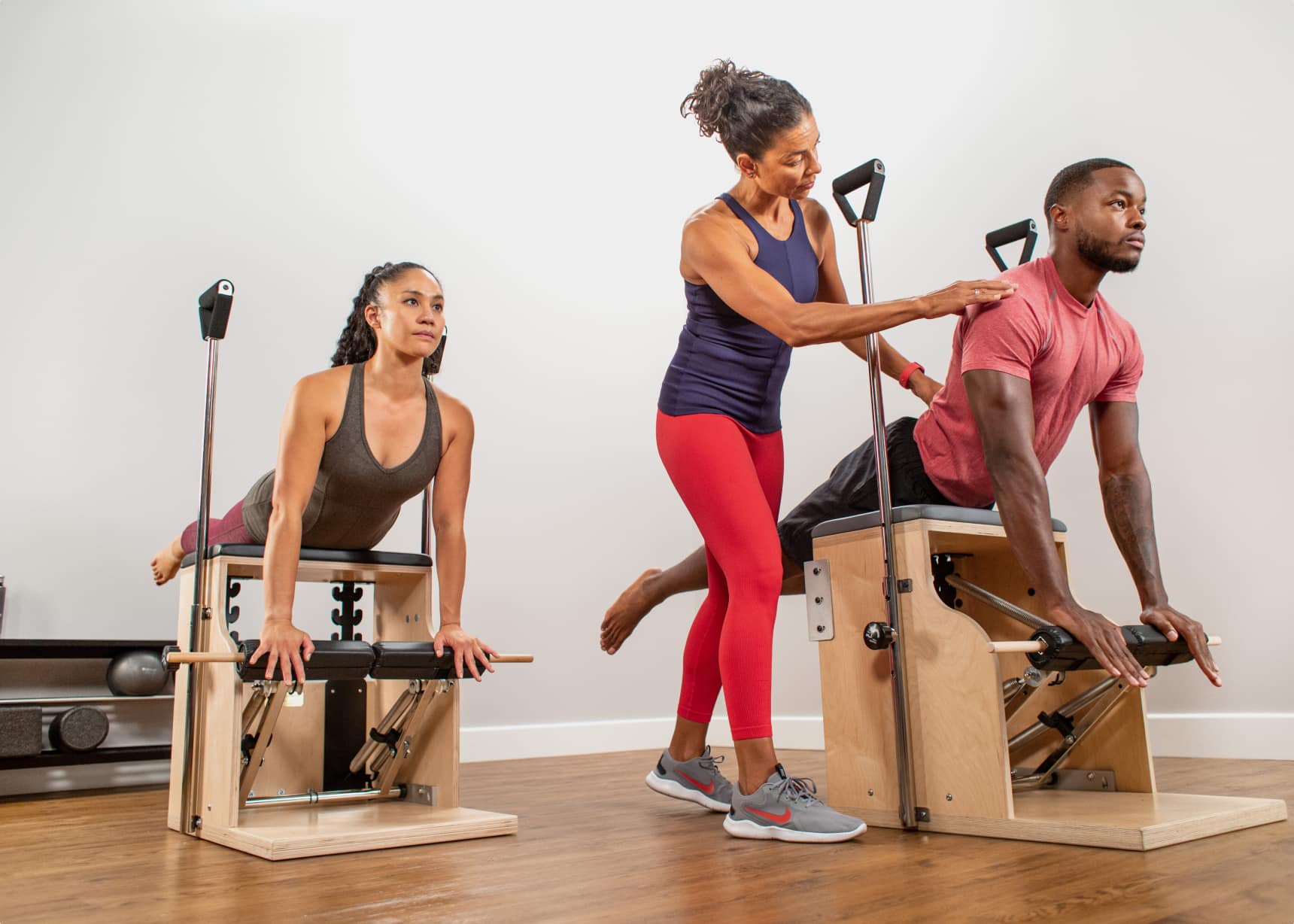Understanding the Pilates Pro Chair: How To Set Up The Pilates Pro Chair

The Pilates Pro Chair is a versatile piece of equipment designed to enhance your Pilates practice. It offers a challenging and rewarding workout that targets various muscle groups, improves flexibility, and strengthens core stability.
Components of the Pilates Pro Chair, How to set up the pilates pro chair
The Pilates Pro Chair is comprised of several key components that work together to provide a dynamic and engaging workout experience.
- Base: The sturdy base of the chair provides stability and support during exercises.
- Platform: The platform, or foot bar, offers a surface for footwork exercises, strengthening the lower body and enhancing balance.
- Spring System: The spring system provides resistance for various exercises, allowing for adjustable levels of challenge based on your fitness level.
- Handles: The handles are used for upper body exercises, providing a secure grip and enhancing stability.
- Foot Bar: The foot bar, or platform, is used for footwork exercises, allowing for a range of movements that strengthen the legs, ankles, and feet.
- Adjustable Height: The chair’s height can be adjusted to accommodate different user heights, ensuring proper posture and alignment during exercises.
Benefits of Using the Pilates Pro Chair
The Pilates Pro Chair offers a wide range of benefits for individuals seeking a challenging and effective workout.
- Core Strength and Stability: The chair’s design encourages engagement of the core muscles, improving overall strength and stability. Exercises like “push-ups” and “rolls-ups” require core engagement for proper execution.
- Flexibility and Range of Motion: The chair’s adjustable springs and platform allow for a variety of movements that improve flexibility and range of motion. Stretching exercises like “lunges” and “side bends” can be performed with the assistance of the chair’s spring system.
- Balance and Coordination: Footwork exercises on the chair challenge balance and coordination, enhancing overall body control and awareness.
- Low-Impact Exercise: The chair provides a low-impact workout, making it suitable for individuals of all fitness levels, including those with joint issues or injuries.
- Versatility: The Pilates Pro Chair can be used for a wide range of exercises, targeting different muscle groups and offering a comprehensive workout experience.
Comparison to Other Pilates Equipment
The Pilates Pro Chair offers a unique combination of challenges and benefits compared to other Pilates equipment.
- Reformer: The Reformer is a more advanced piece of equipment that provides greater resistance and allows for a wider range of movements. However, it requires a higher level of experience and coordination.
- Cadillac: The Cadillac is a larger and more complex piece of equipment that offers a variety of exercises, including suspension work. It is often used for rehabilitation and advanced Pilates training.
- Mat: The mat is a more basic piece of equipment that allows for a wide range of exercises without any external resistance. It is a good starting point for beginners and can be used for a variety of exercises.
Setting Up the Pilates Pro Chair

Setting up the Pilates Pro Chair correctly is essential for a safe and effective workout experience. Proper assembly, adjustment, and maintenance will ensure that you can maximize your training while minimizing the risk of injury.
Assembling the Pilates Pro Chair
The Pilates Pro Chair is typically delivered in several components that require assembly. The assembly process is generally straightforward and involves connecting the chair’s base, frame, and spring system.
- Unpack the components: Carefully unpack all components of the chair, ensuring you have all necessary parts and hardware. Refer to the manufacturer’s instructions for a detailed list.
- Assemble the base: Connect the base sections according to the manufacturer’s instructions. This usually involves aligning and securing the base pieces using bolts and nuts.
- Attach the frame: Connect the frame to the base, ensuring proper alignment and stability. The frame typically attaches to the base using bolts and nuts.
- Install the spring system: Attach the springs to the frame and the footbar, following the manufacturer’s instructions. The spring system provides resistance during exercises.
- Check for stability: Once assembled, ensure the chair is stable and does not wobble. Tighten any loose bolts or nuts.
Adjusting the Chair’s Height and Resistance
The Pilates Pro Chair allows for adjustable height and resistance settings, enabling you to customize your workouts based on your individual needs and preferences.
Adjusting the Chair’s Height
- The chair’s height can be adjusted using a lever or a knob located on the base or frame. Refer to the manufacturer’s instructions for specific adjustment procedures.
- The optimal chair height is when your thighs are parallel to the floor when seated. This allows for proper posture and optimal engagement of your core muscles.
Adjusting the Resistance Settings
- The resistance settings are typically controlled by the springs. The chair may have multiple spring settings, allowing you to adjust the intensity of your exercises.
- Start with a lighter spring setting and gradually increase the resistance as you become stronger. This allows for a progressive overload, which is crucial for muscle growth and strength development.
Ensuring Safe and Proper Setup
A well-maintained Pilates Pro Chair is essential for a safe and effective workout. Here’s a checklist to ensure the chair is properly set up:
- Stability: Ensure the chair is stable and does not wobble. Check all bolts and nuts for tightness.
- Spring function: Test the springs to ensure they function smoothly and provide consistent resistance.
- Padding: Inspect the padding for any tears or damage. Replace or repair damaged padding.
- Footbar: Check the footbar for any cracks or loose connections. Replace or repair damaged footbars.
- Height: Adjust the chair’s height to ensure your thighs are parallel to the floor when seated.
- Resistance: Choose an appropriate spring setting for your fitness level and exercise goals.
